9 Largest Airports in Ohio
If you want to take a trip to the Buckeye State, Ohio has quite an assortment of attractions and lush landscape. With Lake Erie to the north, taking a hike with beautiful waterfalls as the backdrop makes for an easy day. There’s aquariums, botanical gardens, and plenty of zoos, making Ohio a relaxing getaway for someone who wants a little more leisure on their next vacation. If you decide to travel to Ohio, you have many airports to choose from. Take a look at the largest airports in Ohio right now.
Wright-Patterson Air Force Base – 8,100 acres
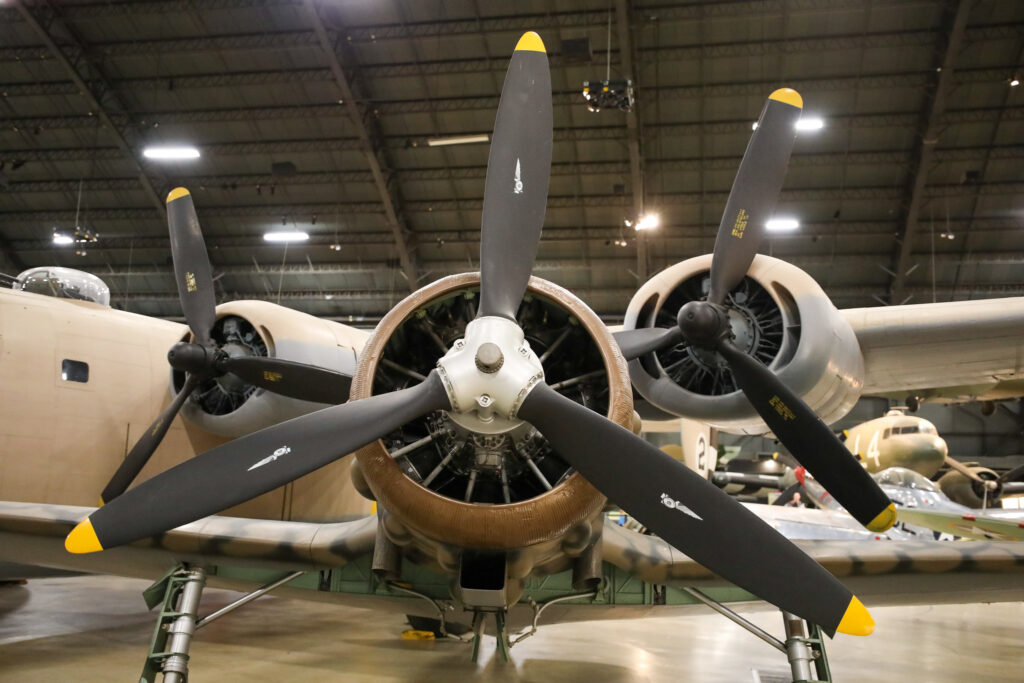
©Creative Commons – License
The oldest airport in Ohio is the Wright-Patterson Air Force Base. Wilbur and Orville Wright made this flying field famous as the main location for their early experiments in 1904. Their first practical airplane – the Flyer III, made this area into a flying field. After the brothers purchased the field, they used it as the grounds for their flying school until 1916.
The US Army purchased the field in 1917 with two nearby fields as they entered the first World War. When the other fields were shut down, the properties combined, and the military renamed the entire area “Wright Field” to honor the Wright Brothers. The area expanded again in World War Two. By the 1940s, this base was primarily used to keep the USA secure from the Soviet Union.
Dayton International Airport – 4,500 acres
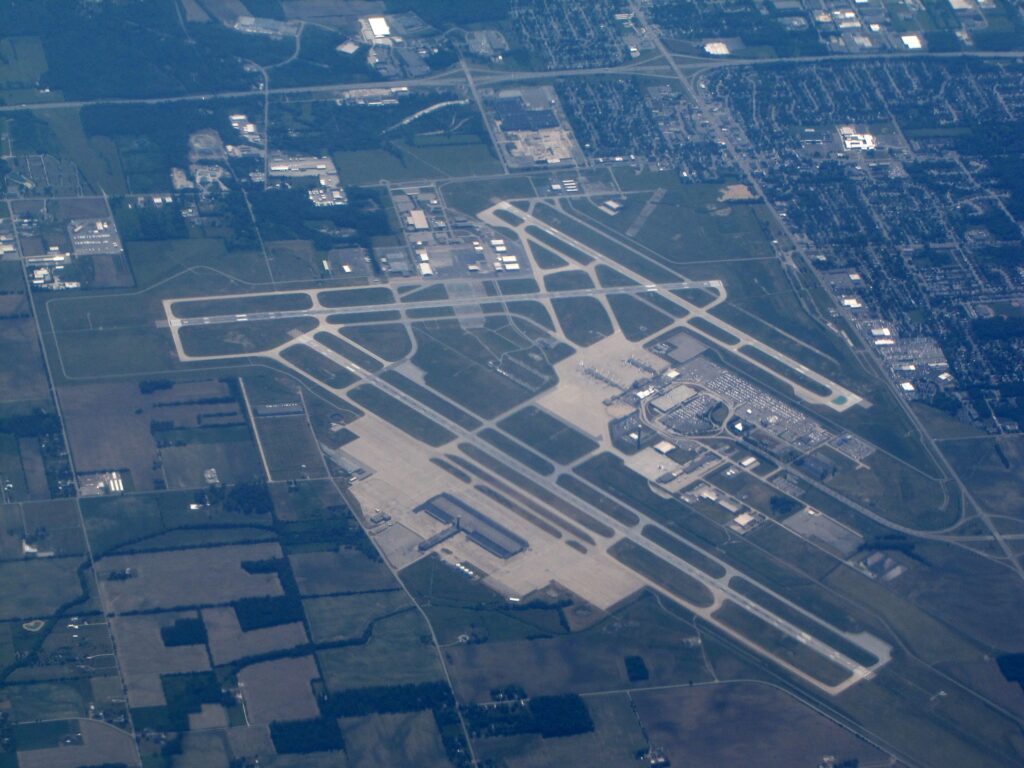
©Creative Commons – License
The biggest airport in Ohio that serves the public is the massive Dayton International Airport. Located near the Interstate 70 / Interstate 75 intersection, it isn’t actually located in Dayton. It is in a part of the city that doesn’t connect with the rest of Dayton, though its mailing address is in the city. Surpassed only by Cleveland Hopkins International Airport and John Glenn Columbus International Airport, Dayton International Airport is the third largest and third-busiest airport in the state.
Originally established in 1928 in Vandalia, this field didn’t open the Dayton Municipal Airport until 1936, featuring just three runways at the time. It became the hub for non-commercial airlines, like Emery Worldwide and Piedmont Airlines in the 1980s. With multiple renovations over the last five decades, it eventually expanded to the massive 4,500-acre property that it is today.
With 5 miles of runway, the airport hosts 6 passenger airlines. It features a multi-level parking garage, several restaurants, and multiple convenience shops for anything you forget at home before your travels.
Rickenbacker International Airport – 4,342 acres
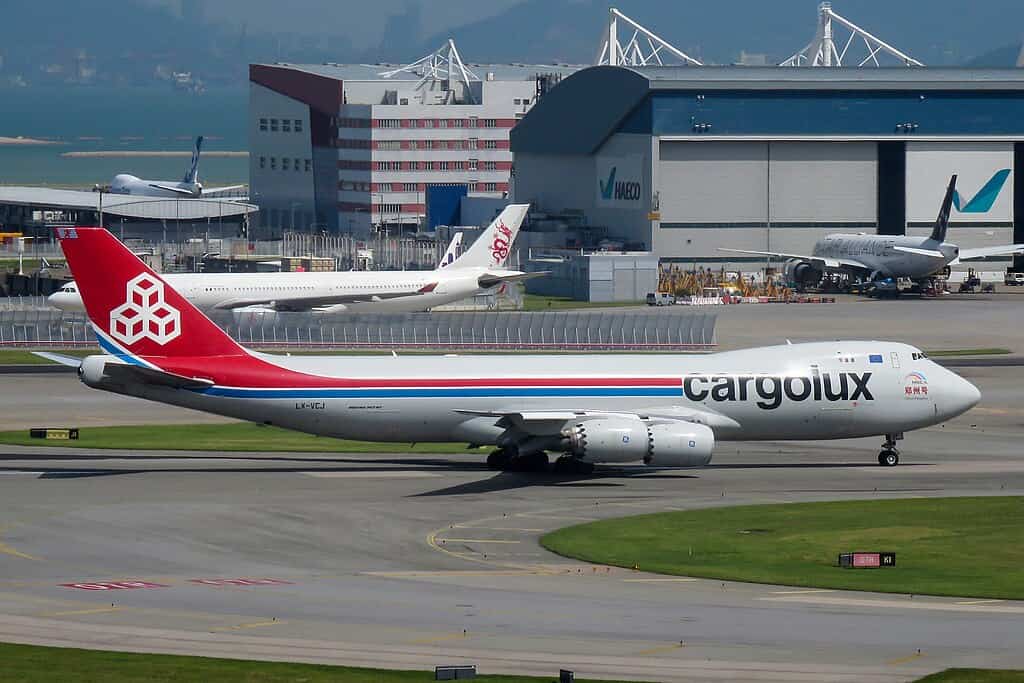
©Creative Commons – License
With services for aircrafts big and small, Rickenbacker International Airport serves Allegiant Airlines in Columbus. Since this is a smaller facility, you have a unique opportunity to get more affordable airline tickets when travelling, even when flying with bigger airlines like Delta and United Airlines.
When the facility opened in the 1940s, its original name was Lockbourne Army Airfield, which came from the name of a local village. It became a training center for the US Army Air Corps, offering the perfect spot for pilots to train. One of its most infamous units was the Tuskegee Airmen. After years of use as a military base, the 1991 Base Realignment and Closure Commission initially wanted to close it or realign it to the Wright-Patterson AFB. Instead, it continued to be a tenant of the Rickenbacker Port Authority. For a long time, it only served as a cargo airport, but they began offering commercial flights in 2012.
To keep you from getting lost, they offer a downloadable map of the entire airport on their website. Taking I-270, 1-71, I-70, Highway 23, or Highway 33 brings you directly to the Columbus-based airport, making it easily accessible for anyone without heavy traffic.
Mansfield Lahm Regional Airport – 2,400 acres
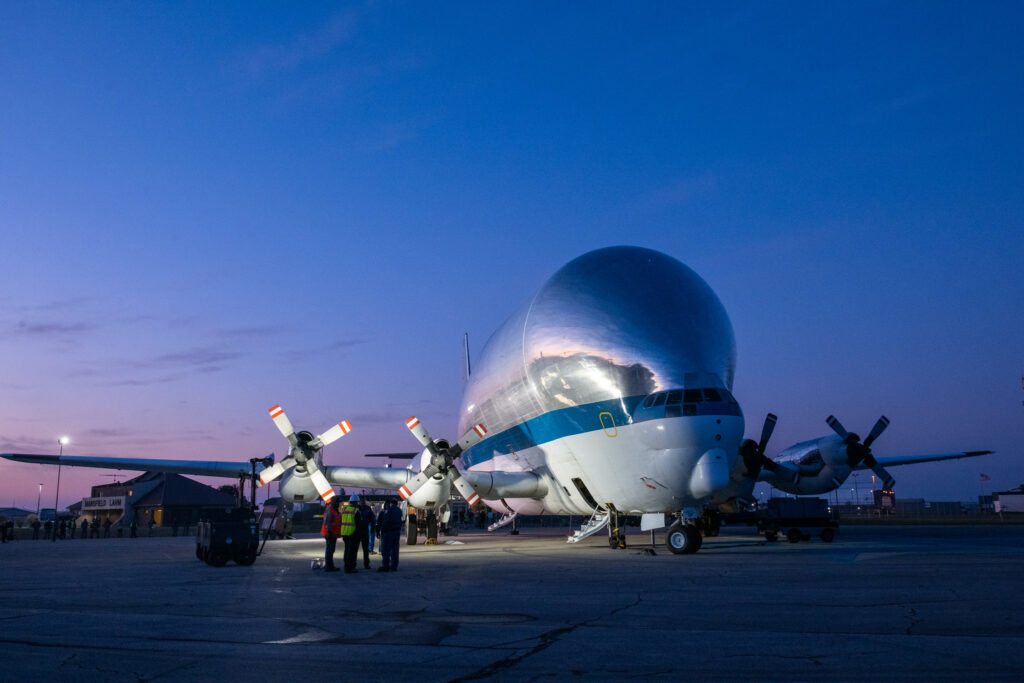
©Creative Commons – License
With 2 asphalt runways and 2,340 acres of property, the next Ohio airport is the Mansfield Lahm Regional Airport. Located in the heart of Ohio, the airfield operates every day of the week. It can handle large military and commercial aircrafts, but you can’t fly with any of the commercial airlines. Instead, it operates as an independent location without a set flight schedule.
Along with serving the public, this airport is the site for U-Vary Aire’s flight instruction and the Mansfield Lahm Air National Guard Base. While they don’t have any scheduled flights like a commercial airline does, they offer charter services that anyone can book. To connect with the local community, they host an even every year with helicopter rides, tours of the planes, and various food vendors. They also have a car show and an area for kids.
Eugene F. Kranz Toledo Express Airport – 2,345 acres
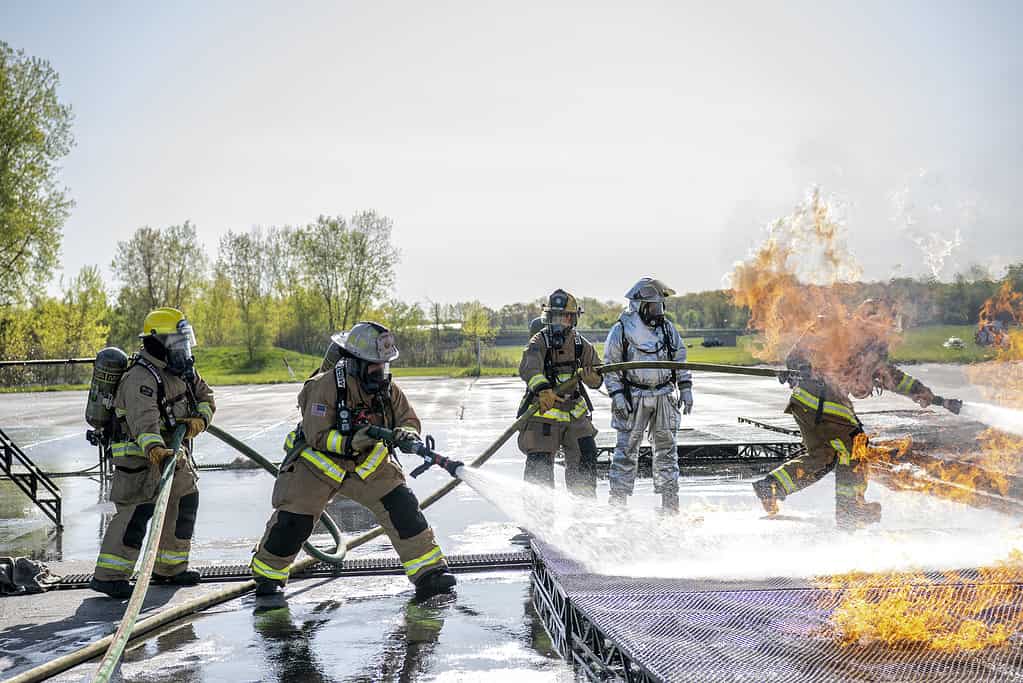
©Creative Commons – License
Along with serving the military, the Toledo Express Airport is a site for safety and flight training.
Eugene F. Kranz Toledo Express Airport, or simply Toledo Express Airport, is yet another military-focused airport. Sitting west of Toledo, its construction in the 1950s replaced the Toledo Municipal Airport. The efforts to establish this airport initially were more modern with construction starting around the end of the World War II. Though they briefly had relationships with several commercial airlines, they only served two airlines by 2011 – Allegiant Air and American Eagle. At their lowest time, they only hosted about 30 flights a week.
While it also has no commercial flights, passenger and cargo airlines use their services. Operated by the Toledo-Lucas County Port Authority, it formerly had up to 7 airlines using it for 40+ flights every day before 2000. It reached its height in 1997, sharply followed by a dip in passengers when more people started to use the Detroit Metropolitan Airport instead.
Akron-Canton Regional Airport – 2,300 acres
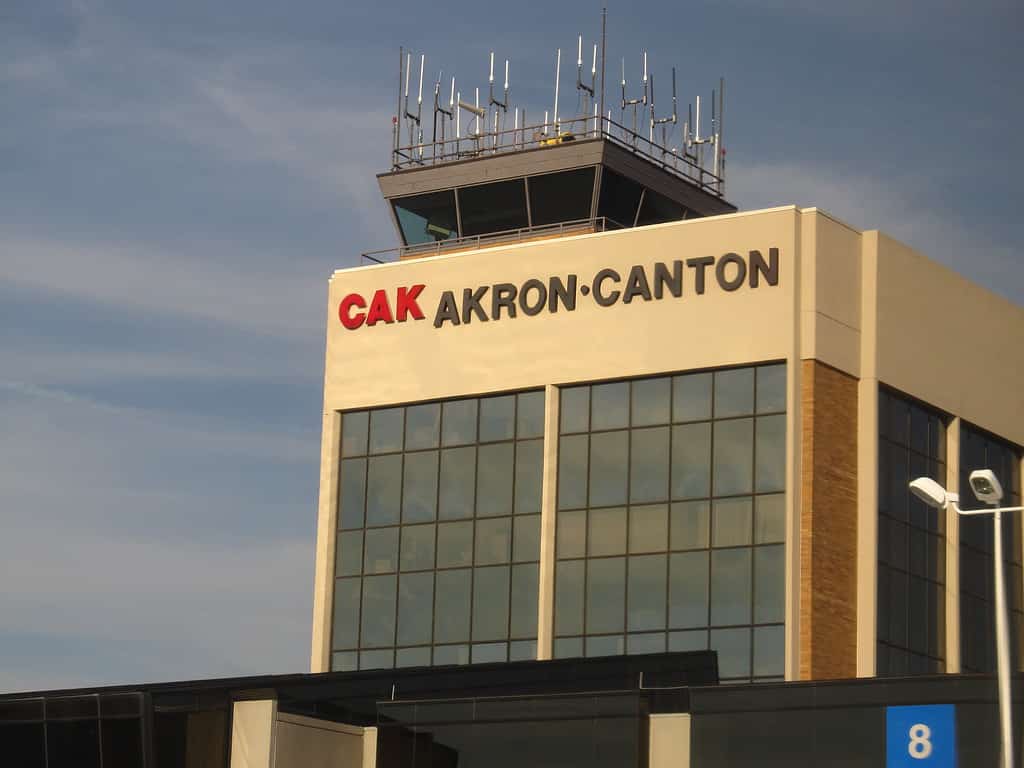
©Creative Commons – License
Located in Summit County, the Akron-Canton Regional Airport offers commercial services to cities that it gets its name from. Both Summit County and Stark County work together to operate it as a smaller commercial service airport. It has two runways, and it provides a maintenance base that PSA Airlines uses.
The initial funds to construct the regional airport came during the second World War to aid in the country’s defense. Mostly private funding helped with the initial construction because of the debate over the use of public funding for such a project. It was initially dedicated as Akron-Canton-Massillon Airport, which soon changed to reflect its current name since the 1940s. American Airlines, United Airlines, and others moved their services to the 1948 to provide flights for commercial passengers.
This facility received a lot of attention in the 2000s as one of the fastest-growing airports in this part of the country. It started seeing an increase of travelers from Cleveland, and the total number of passengers doubled from 2000 to 2006. By the end of 2012, they served a collective 1.83 million passengers in that year. Once Southwest Airlines acquired it in 2011, the airline saw a drastic drop in patrons, reaching its lowest numbers in 2017. After the pandemic, they also lost their long-standing relationship with Delta.
John Glenn Columbus International Airport – 2,265 acres
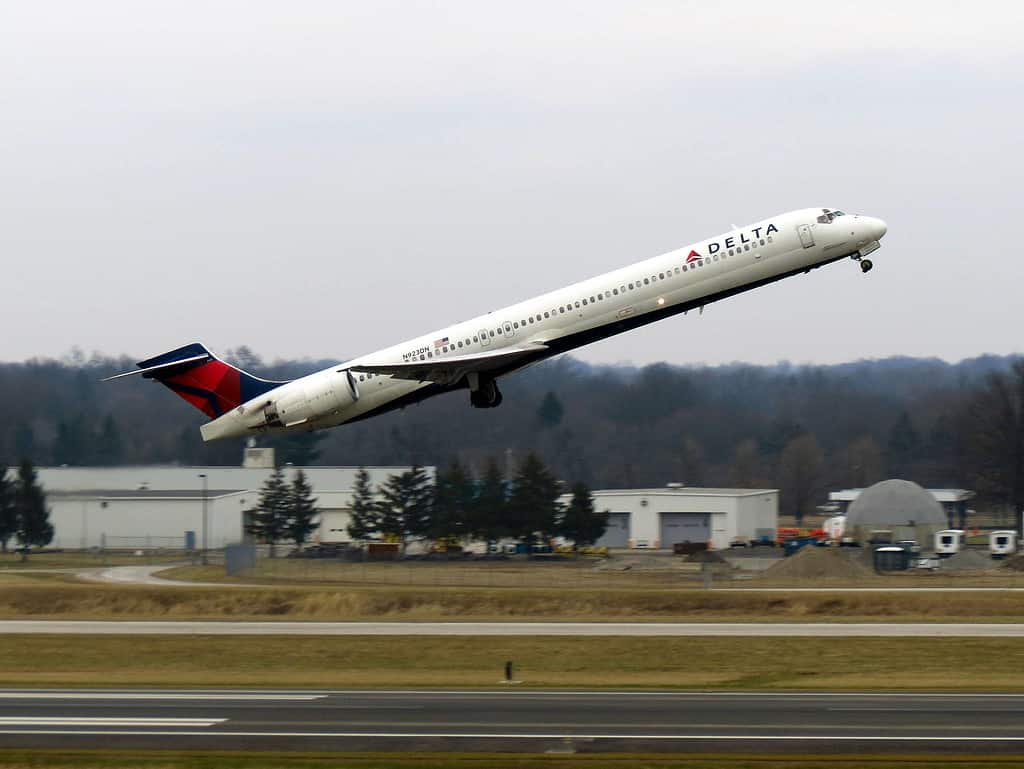
©Creative Commons – License
John Glenn Columbus International Airport is in Columbus. Though they are further down on this list of the largest airports, they serve 9 airlines and fly to 31 airports across the country. With the Columbus Regional Airport Authority overseeing it, it shares the same management as Rickenbacker International Airport and Bolton Field. However, the airport code is CMH, which uses the original name – Columbus Municipal Hangar. Previously known as the Port Columbus International Airport, it received its current name in 2016 to honor astronaut and US senator John Glenn.
Though it opened in 1929 for rail passengers, the US Navy took over most of the facility during World War II. They turned it back over to the local authorities after four years, reestablishing it as a passenger airport. The first expansions started in 1958 with a $12 million terminal building. They renovated the entire airport in 1979 in celebration of its 50th anniversary, adding enclosed jetways for the gates. The next expansion in 1989 dedicated what is now known as Concourse A, which was exclusively used by US Airways when it was established.
After culminating 2 years of expansions in 2000, the airport added new retail shows, new displays, and a food court. However, the local port authority still has work to do. New construction begins in 2024 to replace one of the terminals that will have 40 gates.
Wilmington Air Park – 2,000 acres
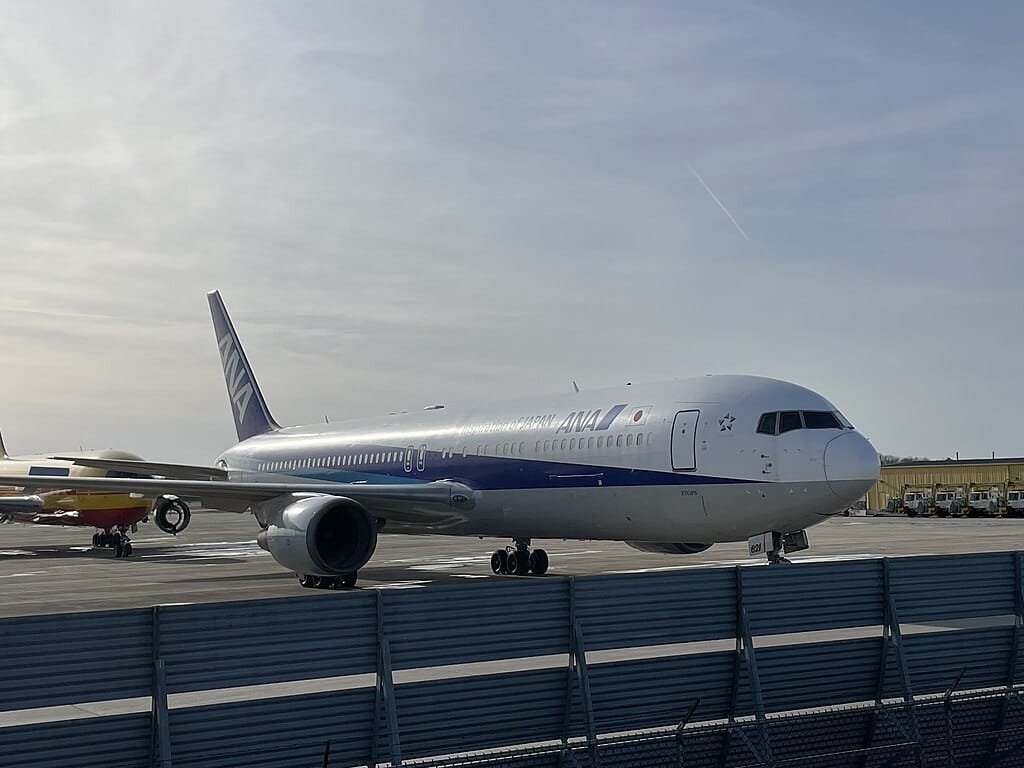
©Creative Commons – License
The next largest airport in Ohio is Wilmington Air Park, which is located in Clinton County. Opened in 1929, it wasn’t used for an emergency landing field until 11 years later. It received the name Clinton County Army Airfield soon after when the United States Army Air Forces took over. When it started primarily hosting flight operations and training by the Air Force Reserve, it became the Clinton County Air Force Base. After its decommissioning in 1972, Community Improvement Corporation took over, giving it the current name of the facility.
This airport stretches 2,0000 acres, sitting at a 1,077-foot elevation above sea levels. In 2006, it had the most activity of its history in 2006 when it had an average of 194 flights daily, and most of them were commercial flights. If you want easy access, take I-71 to get to this airport, right in the center of Columbus, Dayton, and Cincinnati.
Cleveland Hopkins International Airport – 1,717 acres
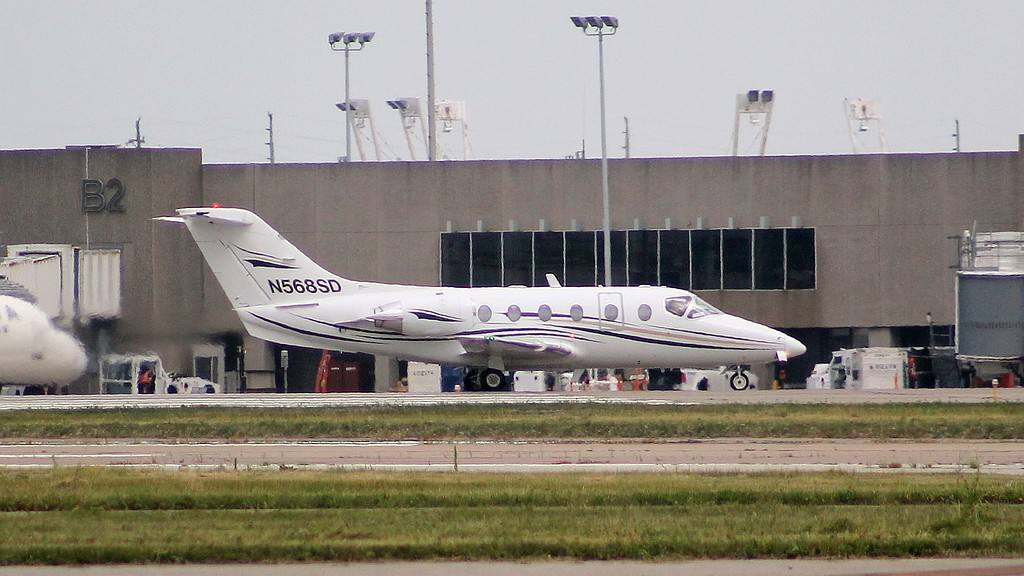
©Creative Commons
Though Cleveland Hopkins International Airport is at the bottom of the list, it still spans 1,717 acres, making it bigger than a substantial number of international and municipal airports. With many innovations in its history, this airport made history as the first airport to have a traffic control tower and two levels to properly sort patrons into departures and arrivals. Until the 1980s, United Airlines used it as its main hub, but they closed it after merging with Continental Airlines in 2010.
Even though United Airlines didn’t use it anymore, it kept leasing the airport so other airlines couldn’t use the property. When it ultimately closed its services with the international airport, patronage resumed. They currently offer 40 different destinations with nonstop flights out of their facility.
Largest Airports in Ohio
| Size | Airport | Ohio Area Served |
| 8,100 acres | Wright-Patterson Air Force Base | Dayton |
| 4,500 acres | Dayton International Airport | Dayton |
| 4,342 acres | Rickenbacker International Airport | Columbus |
| 2,400 acres | Mansfield Lahm Regional Airport | Mansfield |
| 2,345 acres | Eugene F. Kranz Toledo Express Airport | Toledo |
| 2,300 acres | Akron-Canton Regional Airport | Akron, Canton |
| 2,265 acres | John Glenn Columbus International Airport | Columbus |
| 2,000 acres | Wilmington Air Park | Wilmington |
| 1,717 acres | Cleveland Hopkins International Airport | Cleveland |









